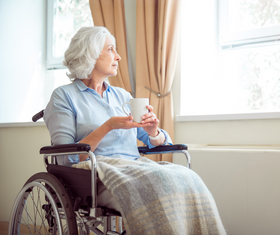
Understanding the Various Types of Mobility Aids for Better Independence
Understanding Mobility Aids
Mobility aids are essential devices designed to assist individuals with mobility challenges due to aging, injury, disability, or medical conditions. These aids enhance movement, ensure safety, and promote independence. Understanding what are mobility aids and their various types can help individuals choose the right one to suit their specific needs. These assistive devices range from simple canes to advanced electric wheelchairs, each addressing different mobility challenges.
Mobility issues can stem from a variety of conditions, including arthritis, neurological disorders, post-surgical recovery, or balance impairments. Having the right mobility aid can significantly impact a person’s ability to engage in daily activities and maintain their lifestyle.
While some mobility aids provide temporary support during recovery, others are designed for long-term use to assist individuals with chronic conditions. It is important to assess individual needs, lifestyle, and physical limitations before selecting the appropriate aid.
Exploring Various Options
There are many different types of mobility aids available, each serving a unique purpose. These are a few of the more prevalent ones:
Walking Aids
Walking aids are designed to provide support, enhance balance, and reduce the risk of falls for those with mild to moderate mobility impairments. Some popular walking aids include:
• Canes: Canes offer additional support and balance. They are ideal for individuals with slight mobility limitations and come in various types, such as standard canes, quad canes, and foldable options.
• Crutches: Crutches are typically used for temporary mobility support, particularly after injuries affecting one or both legs. They come in underarm and forearm varieties.
• Walkers and Rollators: Walkers offer more stability and support than canes. They are best suited for individuals with significant mobility challenges. Rollators, equipped with wheels, seats, and hand brakes, provide greater flexibility and convenience for users.
Wheelchairs and Scooters
For individuals with more severe mobility restrictions, wheelchairs and scooters serve as reliable solutions:
• Manual Wheelchairs: These wheelchairs require user effort or caregiver assistance for movement. They are lightweight, foldable, and suitable for those who have upper body strength.
• Electric Wheelchairs: Ideal for individuals with limited upper body mobility, electric wheelchairs provide motorized movement, offering independence and convenience.
• Mobility Scooters: These are battery-powered devices designed for outdoor use, allowing users to travel longer distances with ease. They are ideal for individuals who need assistance in navigating larger spaces, such as shopping centers or parks.
Supportive Devices
Beyond walking aids and wheelchairs, there are additional supportive mobility devices that can assist with specific movement needs:
• Orthopedic Braces: Designed to provide joint stability and support, these braces are beneficial for individuals with conditions like arthritis or post-injury recovery.
• Standing Aids: These assistive devices help individuals transition from a sitting to a standing position, reducing strain and preventing falls.
• Stairlifts and Ramps: Essential for home mobility, stairlifts allow users to move safely between different floors, while ramps enable wheelchair and scooter access.
Choosing the Right Mobility Aid
Choosing the best mobility assistance is influenced by multiple factors:
• Level of Mobility: Determine the degree of assistance required—whether minimal, moderate, or complete support is needed.
• Environment: Consider whether the aid will primarily be used indoors, outdoors, or both.
• Personal Comfort: The device should fit properly, be easy to use, and accommodate the user’s physical requirements.
• Doctor’s Recommendation: Consulting a healthcare professional can help in making an informed decision based on medical needs.
• Budget and Insurance: Some mobility aids can be costly, so it is essential to explore financial options such as insurance coverage or government assistance programs.
Benefits of Using Mobility Aids
Using mobility aids provides numerous advantages, such as:
• Increased Independence: Reduces reliance on caregivers, allowing individuals to move around more freely.
• Enhanced Safety: Minimises risks of falls and injuries, ensuring users can navigate their surroundings with confidence.
• Improved Confidence: Encourages individuals to stay active and participate in social activities.
• Better Health Outcomes: Prevents muscle and joint strain, contributing to overall well-being.
Maintaining an active lifestyle with mobility aids can significantly improve mental health and quality of life. They encourage physical movement, reduce isolation, and empower users to engage in their daily routines without excessive dependency on others.
Maintaining Independence with Mobility Aids
Mobility aids empower individuals to continue their daily activities without assistance. They provide the ability to move within the home, travel to social events, and participate in physical activities with minimal restrictions.
Ensuring the correct use of mobility aids is crucial in maintaining independence. Proper training, adjustments, and regular assessments by healthcare providers can help users maximize the benefits of their mobility devices.
Additionally, combining mobility aids with home modifications—such as installing grab bars, non-slip mats, and adjustable furniture—can further support independent living.
Enhancing Daily Life
Mobility aids allow users to engage in daily life activities, from performing household chores to going for a walk or traveling independently.
• Social Engagement: Attending family gatherings, outings, or social events becomes more feasible with the right mobility aid.
• Work and Productivity: Many individuals continue working or pursuing their careers with the help of mobility devices that improve movement and accessibility.
• Recreation and Exercise: Mobility aids enable users to participate in physical activities such as swimming, adaptive sports, or light exercises designed for their condition.
Customising Mobility Solutions
Every person’s mobility needs are different, and customization plays a crucial role in ensuring comfort and effectiveness. Several aspects can be tailored to enhance mobility aid usability:
• Adjustable Seat Heights: Provides better support and comfort.
• Ergonomic Handles: Ensures a better grip and reduces strain on the hands.
• Cushioned Seating: Offers additional support and comfort for prolonged use.
• Lightweight Materials: Makes transport and storage more convenient.
• Foldable or Compact Designs: Ideal for individuals who frequently travel or have limited space.
By personalizing mobility aids, individuals can enjoy a greater level of comfort, convenience, and efficiency in their daily routines.
Accessing Mobility Aid Resources
Mobility 2You provides a comprehensive selection of mobility aids, expert advice, and support services to help individuals make informed choices. Whether you need guidance on selecting the right product, maintenance tips, or assistance in securing financial support, our resources are here to assist you.
Accessible mobility resources include:
• Product Guides and Demonstrations: Ensuring users understand how to operate and maintain their mobility aids.
• Healthcare Professional Consultations: Offering expert advice tailored to individual needs.
• Financial Assistance and Insurance Support: Helping individuals explore funding options for their mobility devices.
• Community Support Groups: Providing encouragement, shared experiences, and practical tips from fellow mobility aid users.
Final Thoughts
Understanding the various types of mobility aids is key to improving independence and quality of life. With the right mobility solution, individuals can enjoy a more active, safe, and fulfilling lifestyle.
Explore Mobility 2You’s extensive range of mobility aids to find the perfect fit for your needs and take the first step toward enhanced independence and mobility.




